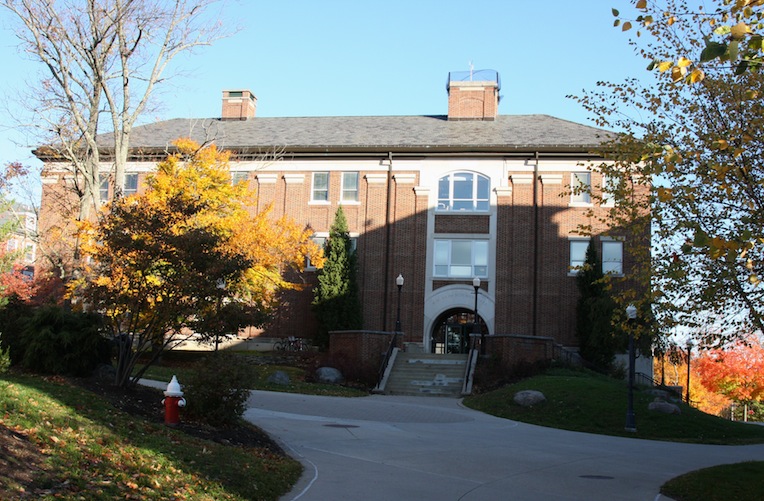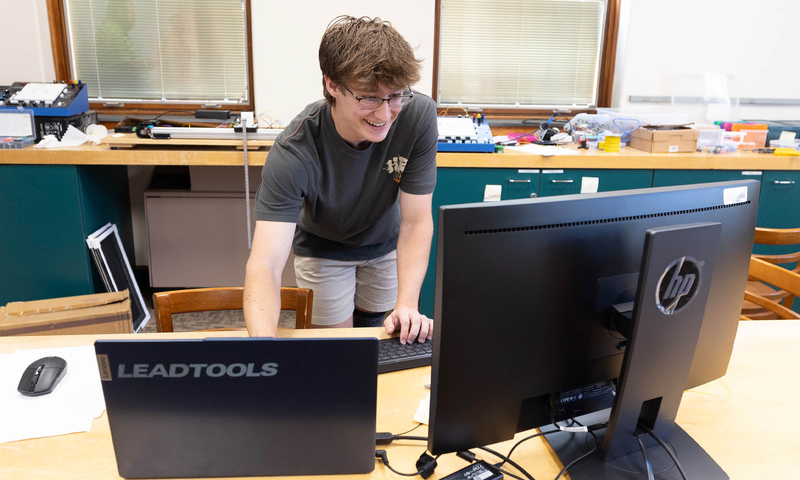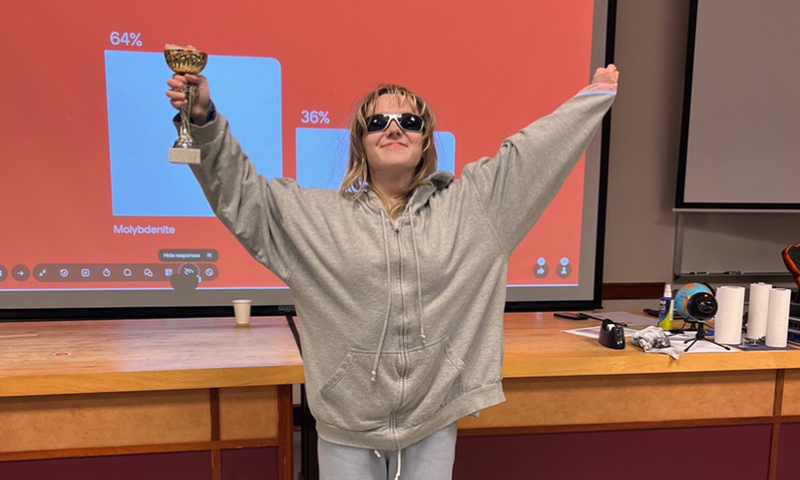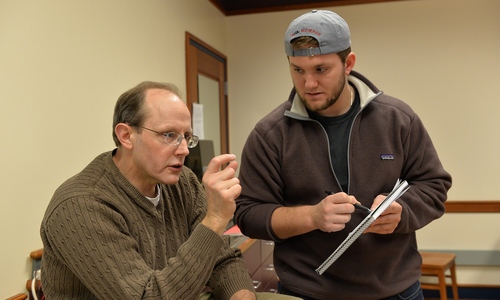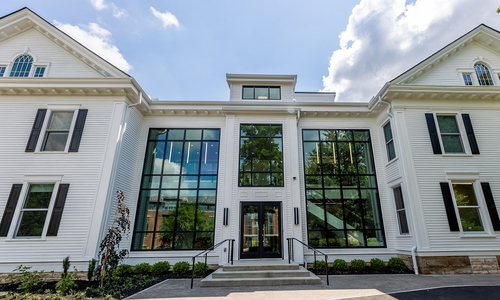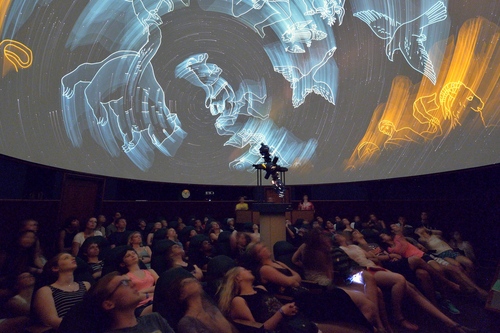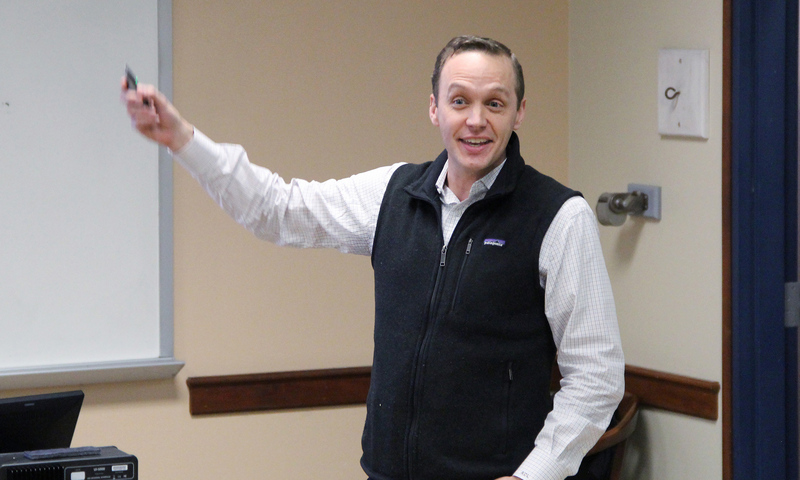More about Olin Science Hall
Funded by a $6.1 million grant from the F. W. Olin Foundation, the elaborate simulated Georgian idiom building was completed in 1994 and is built of brick and limestone. It houses a planetarium and laser spectrometer. It is home to the departments of physics and astronomy, geosciences, and mathematics and computer science and contains 44.000 square feet of space. Among the building's more interesting interior decorations is the "Penrose Tiling" on the main stairwell. The tiling design is made with only two different types of tile laid out so that even if extended to the entire plane, the pattern would never repeat in any direction. The mathematics and computer science area also displays poster-sized blowups of art done by George Stibitz, a computer pioneer and Denison faculty member, which is some of the earliest known computer art. A student art project by David Nassar '07 - the Mona Lisa made from dice - also decorates Olin's walls. In the department of geosciences an array of geologic maps and imagery are posted.
Directory
View the departments, offices, programs, services, and faculty with offices located in F.W. Olin Science Hall.
See Denison A-to-Z »